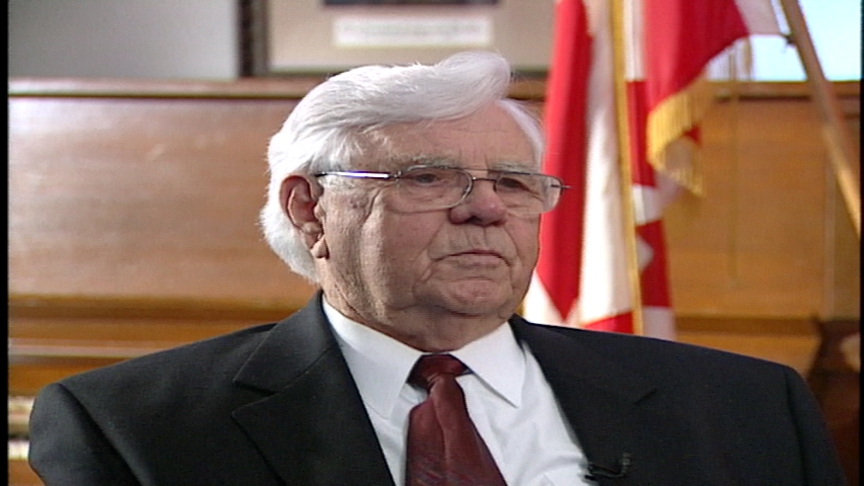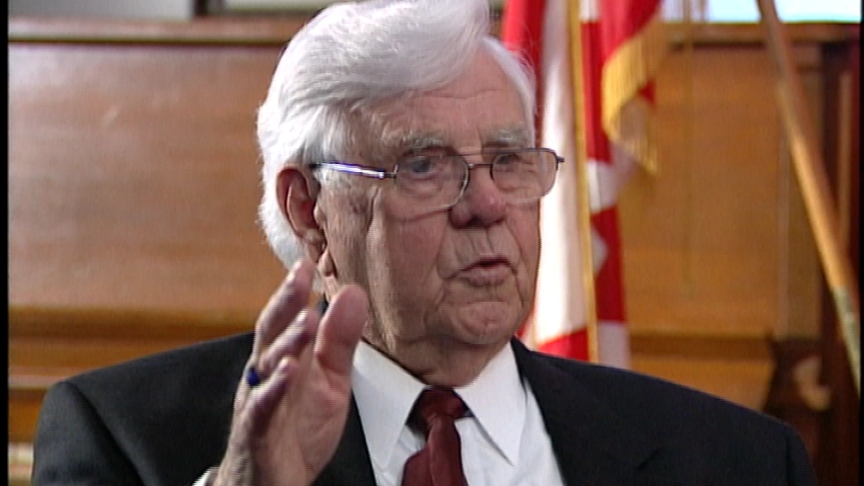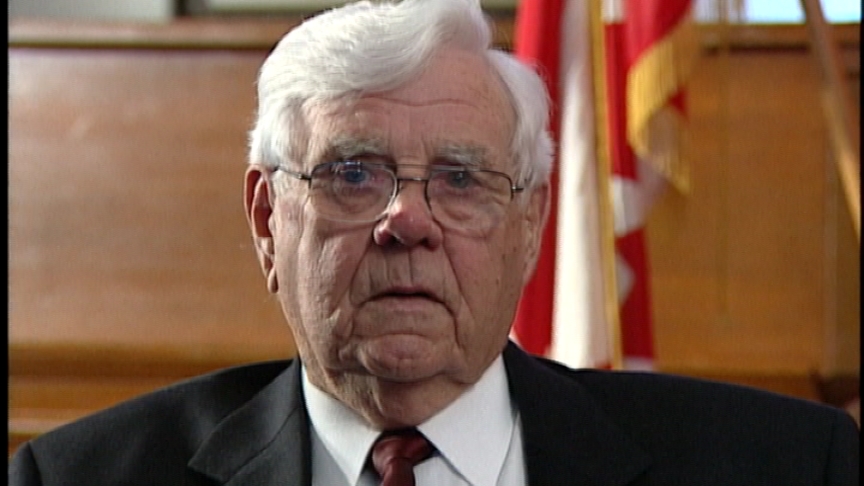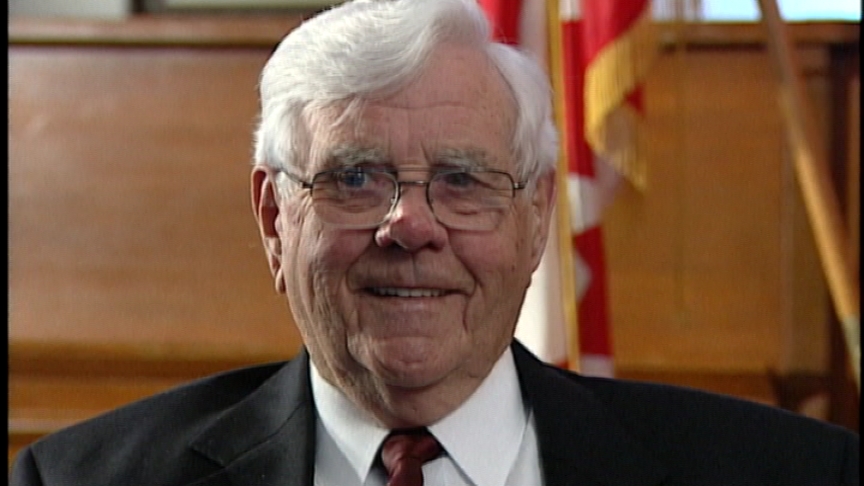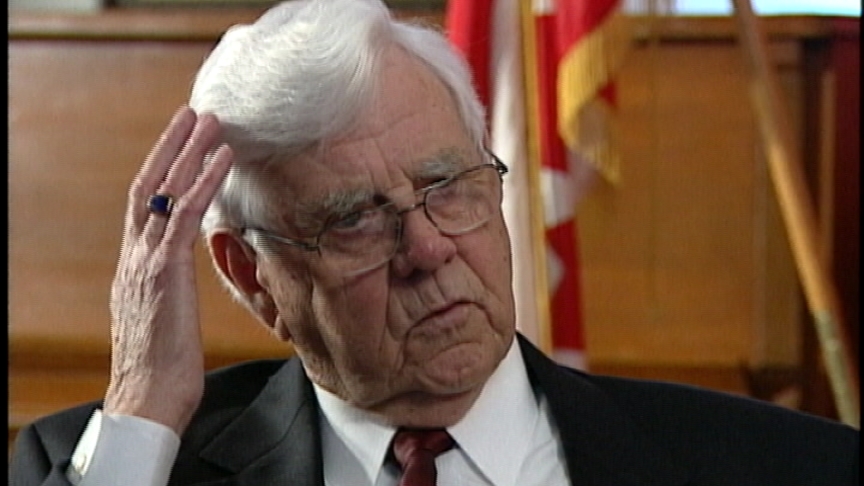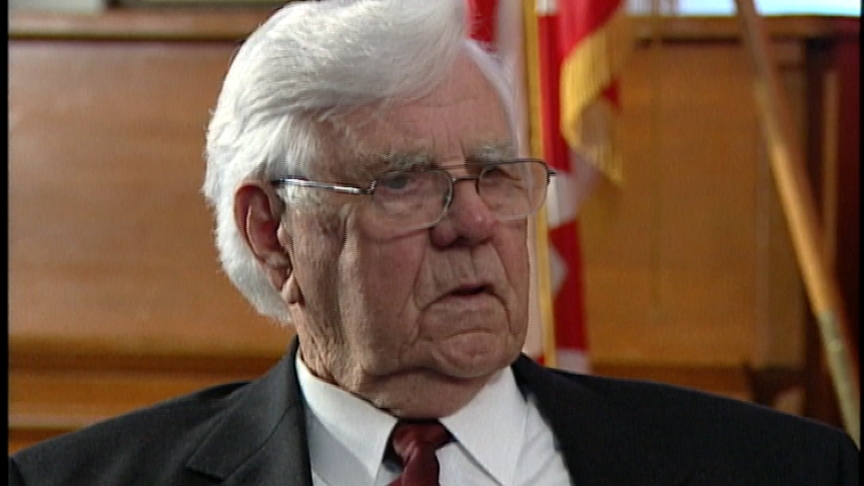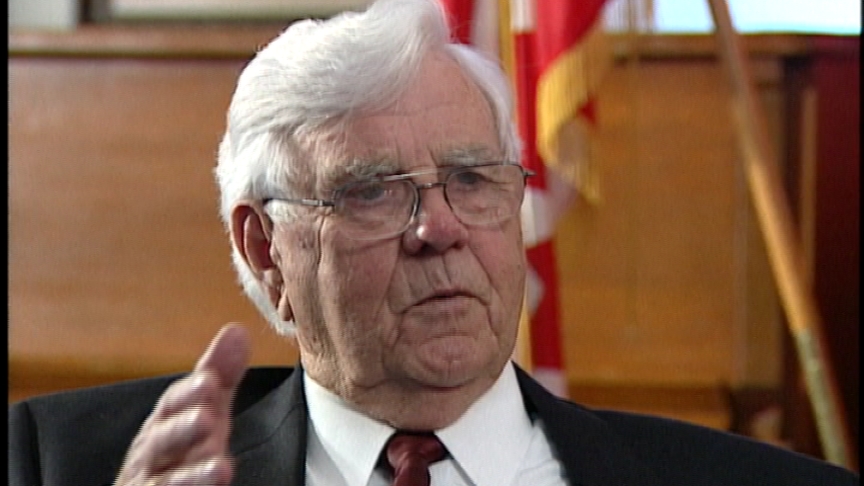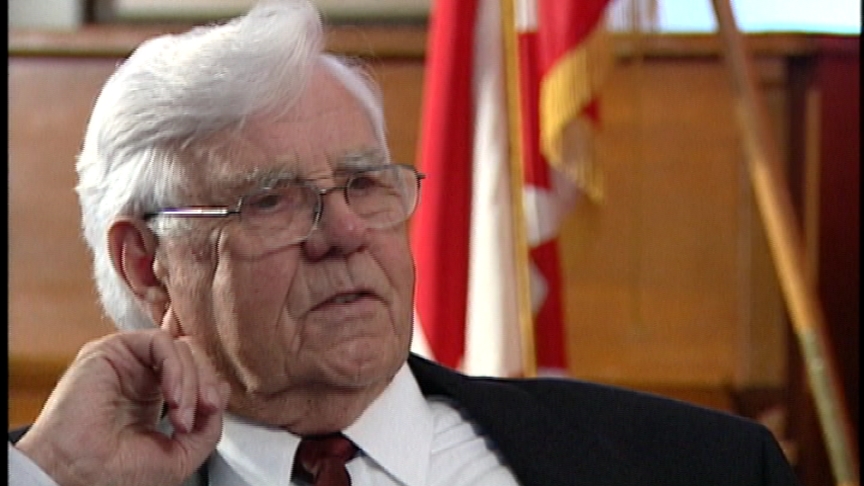Able Bodied Seaman
Heroes Remember
Able Bodied Seaman
Transcript
Description
Mr. Pike describes some of the skills required of an able bodied seaman. Recalling how the officer on his first ship tested his rigging abilities.
Ernest Pike
Mr. Ernest Pike was born in Newfoundland on September 17, 1921. With both parents being dead by 1934, Mr. Pike began to work at sea, sailing for seven months of the year and attending school in between. Wanting to fight for Canada, Mr. Pike immigrated from Newfoundland in 1941. Already sailing with Canadian National Steamship Lines, he signed up for the Merchant Navy. Mr. Pike remained with the Merchant Navy for the course of the war, sailing with numerous ships including the Chomedy, Lady Rodney, and Lady Nelson. Fracturing his skull in heavy action, Mr. Pike was laid up for three months but recovered and quickly returned to active service. Mr. Pike remained at sea after the war, eventually becoming master of the Abegweit, a P.E.I.- N.B. ferry and settling in Summerside, P.E.I., In 1966, he retired in 1978 after 35 years of service.
Meta Data
- Medium:
- Video
- Owner:
- Veterans Affairs Canada
- Duration:
- 02:59
- Person Interviewed:
- Ernest Pike
- War, Conflict or Mission:
- Second World War
- Branch:
- Merchant Navy
- Units/Ship:
- Chomedy
- Rank:
- Able Seaman
Related Videos
- Date modified:



